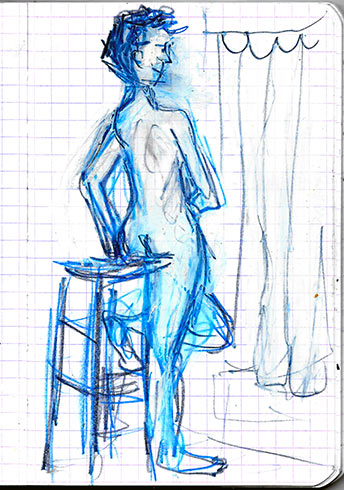
Zeuxis selecting his models
The history of art is full of recurring faces, think about exactly what occurred.
For his painting of Helen of Troy, the Greek painter Zeuxis, unable to find any girl beautiful enough to serve as a model, inspected the teens of the city and chose out four, whose peculiar beauties he proposed to reproduce in his picture. Creating a composite image of ideal beauty is an early algorithmic art. Late 5th-century, early 4th-century BCE art generative AI.

Zeuxis choosing his models for the image of Helen of Troy from among the women of Croton.
Zeuxis worked in Croton (Cicero was right) or Agrigentum (Pliny the elder was right). Being in two places at once like the electron of the quantic theory, Zeuxis was (apologizing for the metaphor) qubit-like and Helen an aesthetic upgrade of the average life model.

Zeuxis painting Helen of Troy.
Georges Braque, "The egg from which Helen of Troy hatched"
Good taste had its beginnings under a Greek sky (Johann J. Winckelmann).

About death and ancient Greek mythology
Zeuxis attempted to create an ideal whole from disparate parts, leaving us with nothing. Fixation on antiquity and mimesis is regarded as a particularly pernicious decadence. Brave pictures courageously come forward to report details of their ideals, Zeuxis having fun drawing people.

Why do most of the "end of the internet" pages have links on them? The story is not yet finished And I meet a lot of artists these days who believe in all kinds of adaptive perspectives. In most cases, having an adaptive perspective won't end well.
One can't paint Troy as it is, but rather as it is felt. In a world often dominated by the pursuit of objective truth, Zeuxis carved out a space for the subjective, the emotional, the intuitive.

Plato and Aristotle were the peripatetic school, because they did their philosophizing while walking. The best mind-wandering art has no goal, the most important thing is the story, not whether the hero gets to live happily ever after. The human image has never been forgotten in the arts. Mind-wandering art can communicate strong ideas and emotions. In ancient tales, fate drives the hero into his intended role and he is guided by the Olympian gods.




